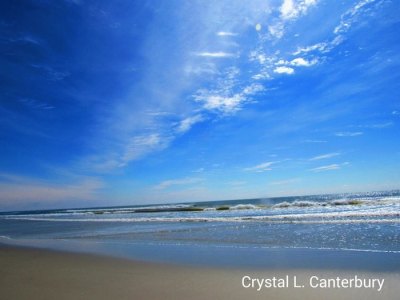Scotch Bonnets and Sand Dollars
On the northern tip of Portsmouth, the once-inhabited village remains, preserved by volunteers, lease-holders, and the National Park Service. Nestled in the sand and salt marsh, near where Ocracoke Inlet meets the Pamlico Sound, Portsmouth Village offers visitors a chance to experience true seclusion, as well as a fascinating and unique history.
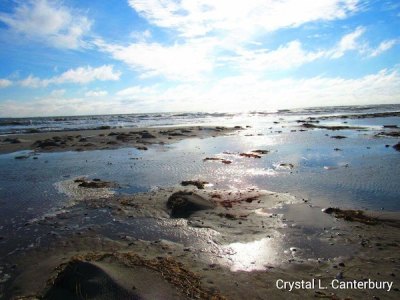
On the other side of the island, where the Atlantic meets the sand, you’ll experience a whole new sense of remoteness – there’s nothing there but beach and wilderness. As you head south, to your right you’ll see low-lying sand dunes and tall grasses; to your left the ocean. And scattered around you, you’ll find dozens and dozens of perfect, untouched sea shells.
These shells are what attract many people to Portsmouth Island and the rest of Cape Lookout National Seashore. This past weekend I had the great fortune of being able to join the North Carolina Shell Club on their annual trip to Portsmouth beach in the hopes of finding some beach treasures.
Saturday morning we met at the National Park Service docks, located next to where the ferries from Cedar Island and Swan Quarter arrive and depart Ocracoke, to meet our passenger ferry. Life-long Ocracoker Erick O’Neal met us promptly at 8:30 and we hopped into his skiff, sitting around either a picnic table placed in the center, in two metal chairs near the front, or on a storage unit in the rear of the boat. The morning air was a bit chilly, so we – Captain included – were bundled up in preparation for the wind and spray we would undoubtedly experience on the 20-minute ride to Portsmouth Island.
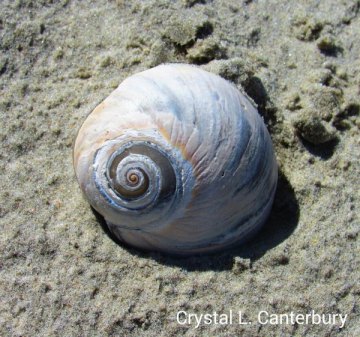
Now, accessing the beach isn’t as simple as pulling a boat up to a dock and disembarking. Prior to Saturday I had met Dora Zimmerman, a member of the NC Shell Club, at the Ocracoke Visitor Center. She advised me to wear tall rain boots in order to keep my feet dry. It was high tide as we approached the soundside beach on Portsmouth, and Erick pointed out how choppy the ocean was as he slowed and stopped the boat. Without hesitation, the NC Shell Club members began to scoot across the flat front of the boat and hop into the water. I followed suit and we all waded through the water and onto the beach, happy I took Dora’s advice to wear tall rain boots.
The sun was brightly shining off the Atlantic, and the brisk breeze made the standing water move and sparkle. Just beyond the sound-side dunes large ponds have formed, and on clear days – as Saturday was – reflect the brilliant blue of the sky. The wet mud and sand surrounding these ponds was quite and unexpectedly unstable, so my feet sank with each step, which was extremely unnerving. As quickly as I could, I got onto drier ground and away from the muddy, water-logged ground. We walked about half a mile from where we left the boat, over dunes and by mudflats, passing a worn out bridge to our right, and I chatted with Hazel Andress, another NC Shell Club member, until we neared the ocean. This is where it seemed the whole world opened up. Other than signs placed on the beach by the National Park Service, there were no other indications of recent human visitors to the island. Portsmouth Village wasn’t visible over the cedar and juniper trees, which are able to survive the harsh weather conditions and salty habitat, and all that could be distinguished from Ocracoke Village was the lighthouse and water tower.
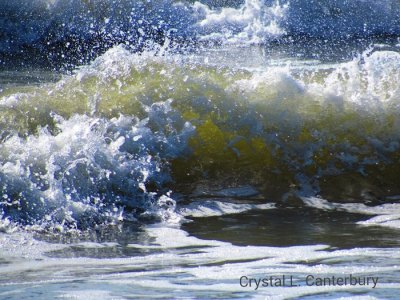
The sandy part of the beach is wide on Portsmouth – similar in width to Ocracoke’s beach from ORV Ramp 72 through South Point – so when I ventured back into the dunes searching for shells, I was amazed to see how far the water had been pushed over and around the dunes. I followed the natural pathways around the sandy mounds, going behind the dune-line and toward the salt marsh. Here I found many shells and saw waterlines, indicating the power of the wind and ocean.
I continued back to the ocean, and spotted the sea shell of all sea shells…. at least for me anyway. There, just lying in the sand, was a dark-grey knobbed whelk that was larger than my foot. I couldn’t believe no one who came across it before me had wanted it, so I quickly scooped it up and added it to my steadily growing collection. Shortly after finding the foot-sized shell I met up with Dora who showed me some of her treasures. She had discovered an Atlantic giant-cockle and explained that for shellers, finding one still attached was quite an exciting discovery. Dora closed the shell and held it vertically. With the opening at the bottom and the joint at the top, it looked like a heart. As our conversation continued, I asked Dora if she had found any sand dollars and, if so, where. She quickly produced a sand dollar from her bucket and handed it to me, telling me to keep it. As I turned to look around, I noticed a sand dollar, poking ever-so-slightly out of the sand just a few feet away. I was in a state of pure joy. It’s not very often I find sun-bleached-white sand dollars. I typically find them still fuzzy, so on the chance they’re still alive, I leave them on the beach. In any event, I was really happy to have found a sand dollar and for Dora being kind enough to give me one.
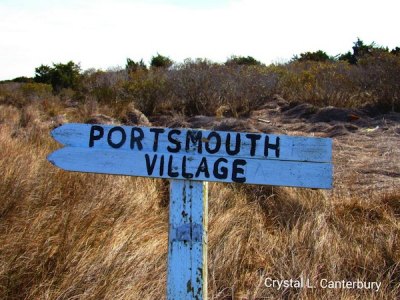
About a mile – and many shells and two sand dollars – later, a weather-worn sign pointing west directed the way toward Portsmouth Village. Long bird enclosures, which span consecutive miles of the seashore, hugged the sand dunes, but a break in the enclosures was lined, allowing access to the dirt road leading into Portsmouth Village. Of course I followed the sign. I walked over only a couple dunes before the scenery suddenly and drastically changed into salt marsh. Wind-blown brown marsh grasses and short trees with grey trunks and limbs lined the dirt road, and a whole lot of nothing, except marshland and pools of water, could be seen in any direction. I walked for about a half-mile before the road became messy and flooded from recent rainfall. It looked more like the C&O canal than a road, so I turned around headed back for the beach.
As I made my way back to the shore, I found several more shells. Small colorful lightning whelks protruding from the sand just a bit caught my eye, as did a moonsnail-shaped shell called a shark eye. With a few more treasures in my bags (I brought one for heavy shells, another for delicate shells) I began back north, working my way around the dunes to see what shells had been dragged up by the ocean.
Along the way I met up with another NC Shell Club member. Earlier in the week I met Nancy Timmerman and her husband John when they came into the Visitor Center, but had no idea they were with the Club. Saturday morning Nancy and I sat next to each other on the boat ride to Portsmouth, which made the 20-minute trip very enjoyable, and once again we began chatting and also sharing what we’d found on the beach. To my extreme disappointment, I realized – while gently sifting through my bag– that one of my sand dollars had broken. Nancy asked if I had any containers or plastic bags. She explained that putting delicate shells into an air-filled bag will offer a nice buffer, as will layering sand around breakables in a container. Luckily, I had an empty container, so I blanketed sand around the remaining sand dollar and closed the lid. Nancy also suggested I look inside the broken sand dollar for the five doves that form the five sections of the animal and acts as mouths within its endoskeleton. When you shake a whole sand dollar (gently, of course) you’ll hear a rattling. That’s from the doves moving around inside the endoskeleton. Side note: I just recently learned sand dollars are urchins! How did I not know this before? Anyway, it was a pretty fascinating conversation, and we continued walking north and talking, only stopping to investigate shells and stash them in our bags.
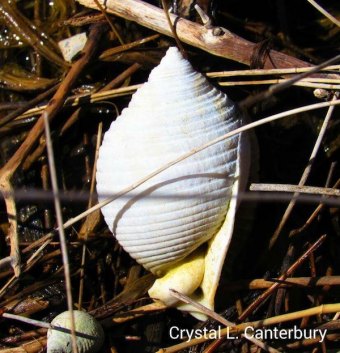
Having no luck finding any that weren’t broken, Nancy offered me a Scotch bonnet she had found. Shortly after she was kind enough to direct my attention to one laying in the sand. Again, I was ecstatic. Dora and Nancy must be good luck for finding shells. Both gave me one of theirs, and within minutes (much to my delight) the shells I was hoping to find appeared! It was shelling magic!
Nancy and I parted ways when she stopped to eat lunch, so I carried on up the beach, winding my way back behind the dunes, near the marsh grasses, searching for shells along the waterline. I found numerous lightning and channel whelks, a couple Scotch bonnets, and several whole sand dollars. By the time I reached Ocracoke Inlet, the tide was out and more treasures were to be found. I sat down on a dune to have lunch and enjoyed the surrounding scenery. Off in the distance and slightly to the right I could see the white-capped waves of the Atlantic. Directly to my front was the inlet, its small waves quietly lapping against the sand. To the left I could see Ocracoke Village and South Point, where a few vehicles were parked, the people no doubt enjoying the warmer weather.
Since departure time was approaching, I stayed near where Erick would arrive on his boat to take us back to Ocracoke. I wandered around the sound-side dunes, back to where the rickety bridge is located, and explored the edges around the large pools of water. I also wanted to see where the bridge went, but decided against it as one end was submerged in the pond and, really, where could it go? The Village wasn’t that close, so it couldn’t have been a way there…I don’t think. At that moment I thought of the song “Road to Nowhere” by the Talking Heads. Bridge to nowhere, road to nowhere; tomato, tom-ah-to… same kind of thing.
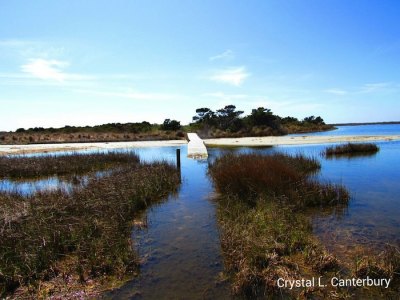
After coming to the conclusion I wouldn’t be exploring the bridge to (seemingly) nowhere, I turned my attention to the grasses and water around me. I found a random white Scotch bonnet lying on the marsh grasses, and checked to make sure no animal was residing inside before adding it to my bag of shells. Upon further investigation of the area I noticed dozens of snails, some submerged in the shallow, still water. Others were on the damp sand just out of the water’s reach, and a few were moving around, slowly gliding over the sand. Their white and cream colored shells stood out against the brown murkiness of the sand and mud. Algae was growing on some of the shells, adding a touch a brilliant green to the shades of brown of the grass and mud.
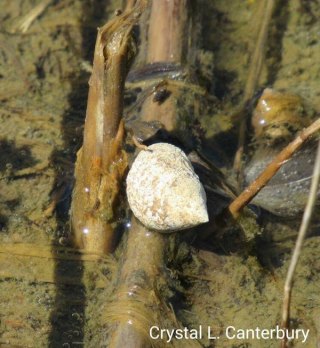
I ventured back out towards the inlet and found some black, red, and pink spotted scallop shells, and even two lettered olives. It was in this sound-side area that I also found pretty razor-shaped clams shells. Some I found were solid white, while others were mostly white with a faint pink outer rim. White shells with brown outer edges were also lying on the sand, as were more of the same types of shell, colored with varying shades of orange. Near the water were different types and colors of sea weed, mixed in together forming piles after having been washed onto the sand. Among the sea weed were bits and pieces of broken shells and sand dollars, and occasionally a sea jelly. A lone sea gull floated by in the water, and near the dunes a Boat-tailed grackle searched for food in a tidal pond.
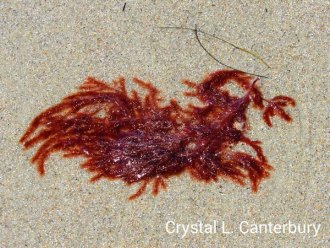
Dora and Hazel had been exploring the tidal pools near the water for some time, so I went over and asked what they had found. Dora had a medicine bottle filled with teeny-tiny shells. She picked up a solid white wentletrap and placed it in her hand so I could see the delicate, pretty shell. Next she dug just under the surface and picked up the teeniest of tiny shells. The bivalve (I can’t remember its name!) was white, but she and Hazel explained that when they dry, these types of shells look like peppermint candies. Both women said some of the best shells can be found barely below the surface just after the tide recedes, but you have to look carefully as the shells are so small.
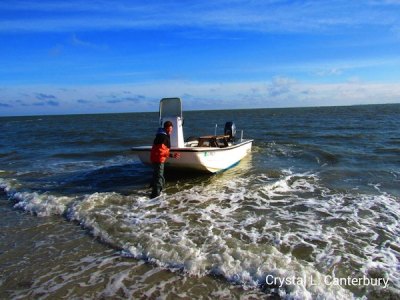
Gradually, everyone in the group made it back to our pick-up point. We saw Erick O’Neal’s boat off in the distance, and once he got closer to the shore, he slowed and stopped the boat as close as he could. I imagined having to do one of two things to get back into the boat. The first was having to somehow climb/hurl myself into the boat all while avoiding falling into the chilly water. This would not have been accomplished gracefully, but probably would’ve been hysterical to any on-lookers. The second scenario was that we would have to scoot across the boat’s flat front, just like we did to exit; only hoisting one’s self up onto a floating, unsteady skiff would be a bit of a challenge.
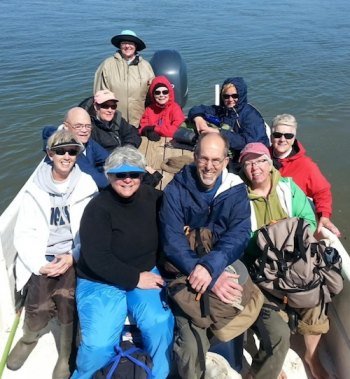
Thankfully it was low tide, so we simply stepped into the boat with no issue. Yay! Erick took a few photos as requested by some folks in the group before leaving Portsmouth for Ocracoke. The trip back was quieter than it was that morning. I think everyone was worn out from a full day of walking, searching, and carrying all the beach treasures.
